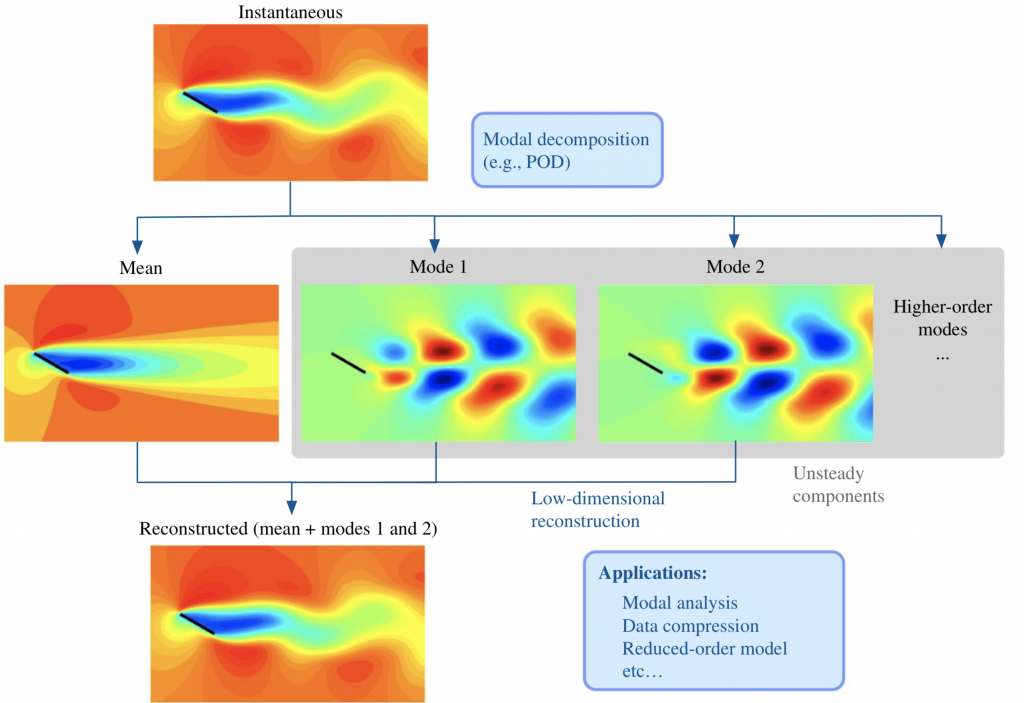
Simple aerodynamic configurations under even modest conditions can exhibit complex flows with a wide range of temporal and spatial features. It has become common practice in the analysis of these flows to look for and extract physically important features, or modes, as a first step in the analysis. This step typically starts with a modal decomposition of an experimental or numerical dataset of the flow field, or of an operator relevant to the system. We describe herein some of the dominant techniques for accomplishing these modal decompositions and analyses that have seen a surge of activity in recent decades. For a non-expert, keeping track of recent developments can be daunting, and the intent of this document is to provide an introduction to modal analysis that is accessible to the larger fluid dynamics community. In particular, we present a brief overview of several of the well-established techniques and clearly lay the framework of these methods using familiar linear algebra. The modal analysis techniques covered in this paper include the proper orthogonal decomposition (POD), balanced proper orthogonal decomposition (Balanced POD), dynamic mode decomposition (DMD), Koopman analysis, global linear stability analysis, and resolvent analysis.
The figure shows the modal decomposition of two-dimensional incompressible flow over a flat-plate wing. This example shows complex nonlinear separated flow being well represented by only two POD modes and the mean flowfield. Visualized are the streamwise velocity profiles.
Literature:
-
![[PDF]](https://flowphysics.ucsd.edu/wp-content/plugins/papercite/img/pdf.png)
![[DOI]](https://flowphysics.ucsd.edu/wp-content/plugins/papercite/img/external.png) Taira, K., S. L. Brunton, S. Dawson, C. W. Rowley, T. Colonius, B. J. McKeon, O. T. Schmidt, S. Gordeyev, V. Theofilis, and L. S. Ukeiley. “Modal analysis of fluid flows: an overview.” Aiaa journal (2017).
Taira, K., S. L. Brunton, S. Dawson, C. W. Rowley, T. Colonius, B. J. McKeon, O. T. Schmidt, S. Gordeyev, V. Theofilis, and L. S. Ukeiley. “Modal analysis of fluid flows: an overview.” Aiaa journal (2017).
[Bibtex]@Article{TairaEtAl_2017_AIAAJ, author = {Taira, K. and Brunton, S. L. and Dawson, S. and Rowley, C. W. and Colonius, T. and McKeon, B. J. and Schmidt, O. T. and Gordeyev, S. and Theofilis, V. and Ukeiley, L. S.}, title = {Modal analysis of fluid flows: An overview}, journal = {AIAA Journal}, year = {2017}, doi = {https://doi.org/10.2514/1.J056060}, file = {:TairaEtAl_2017_AIAAJ.pdf:PDF}, }
